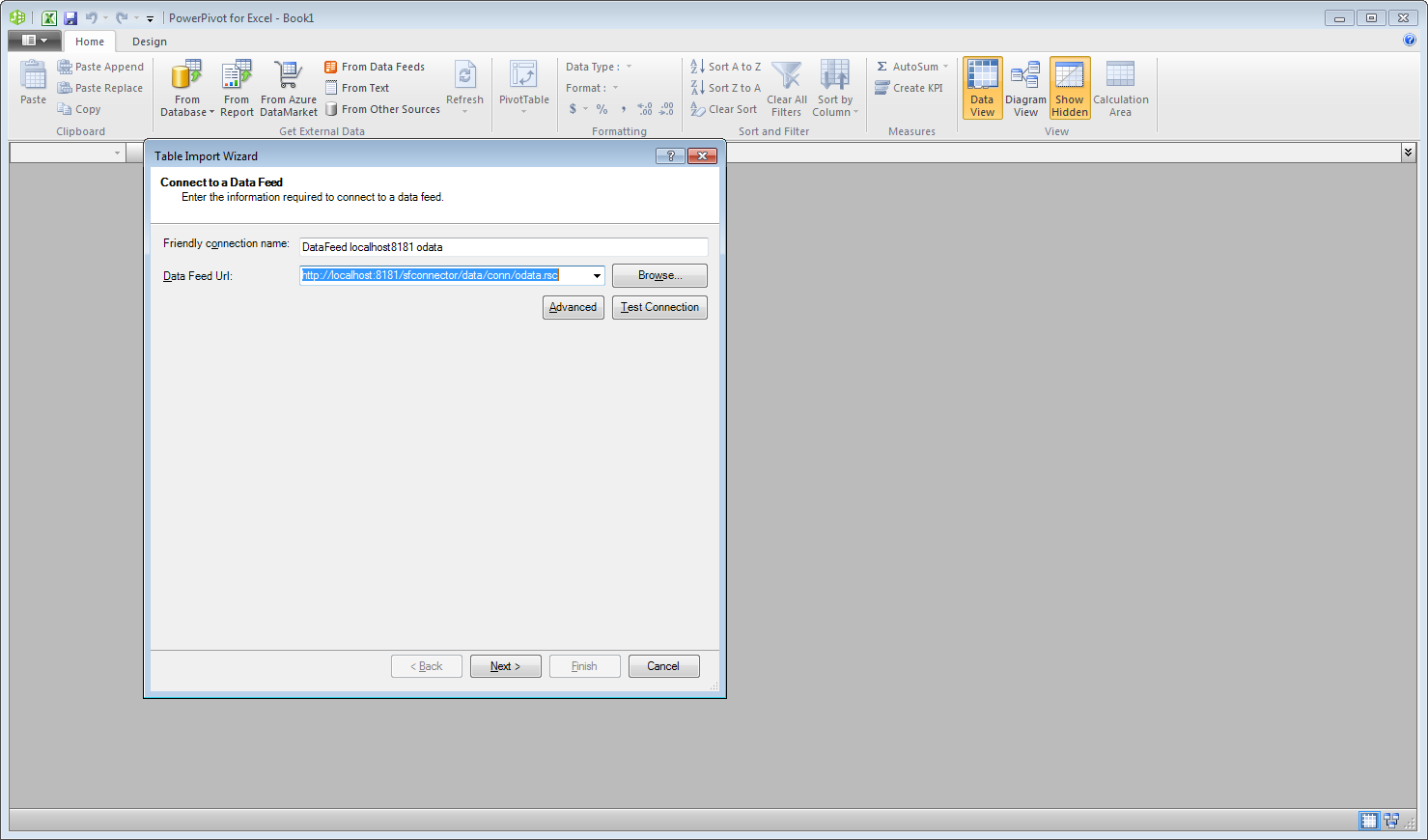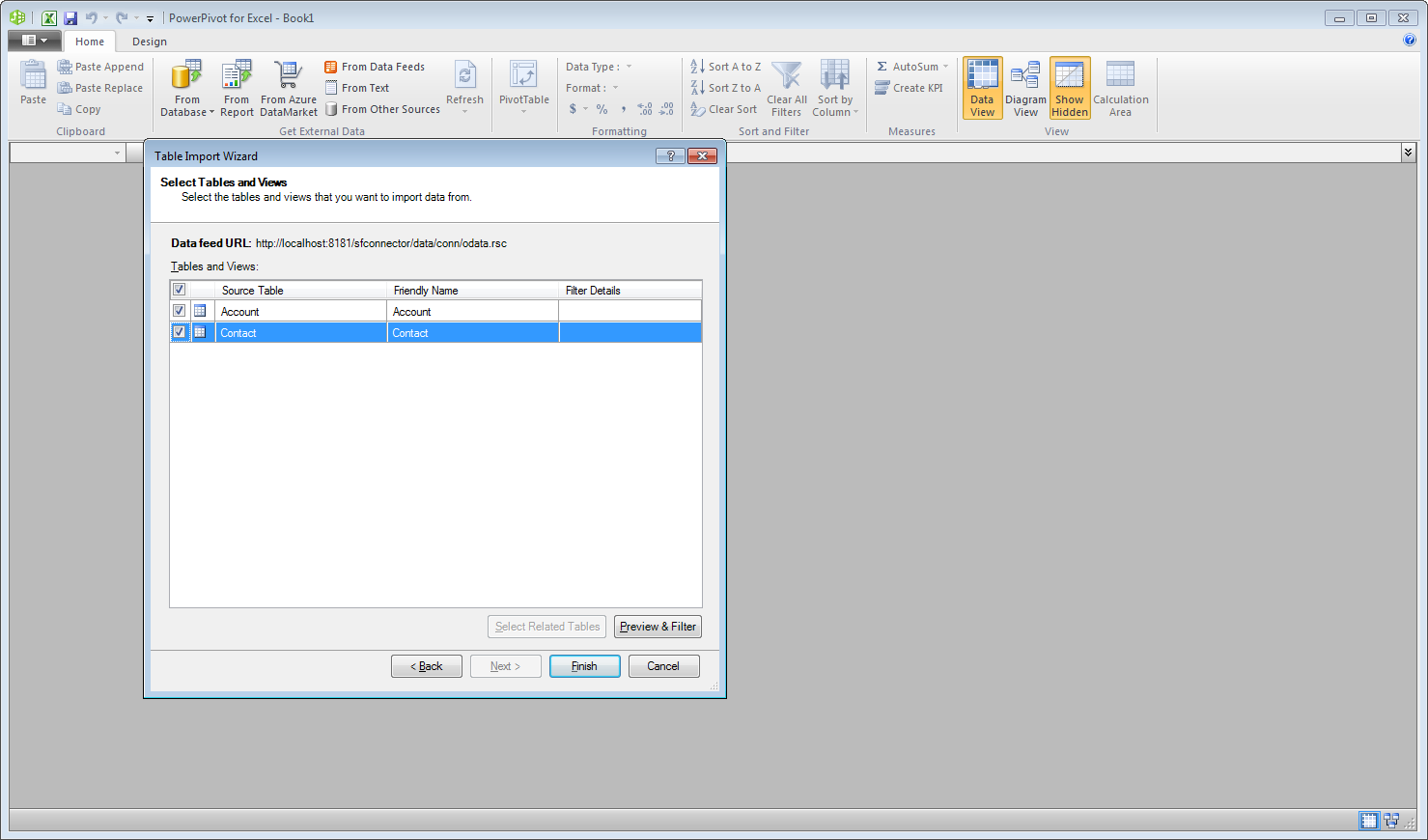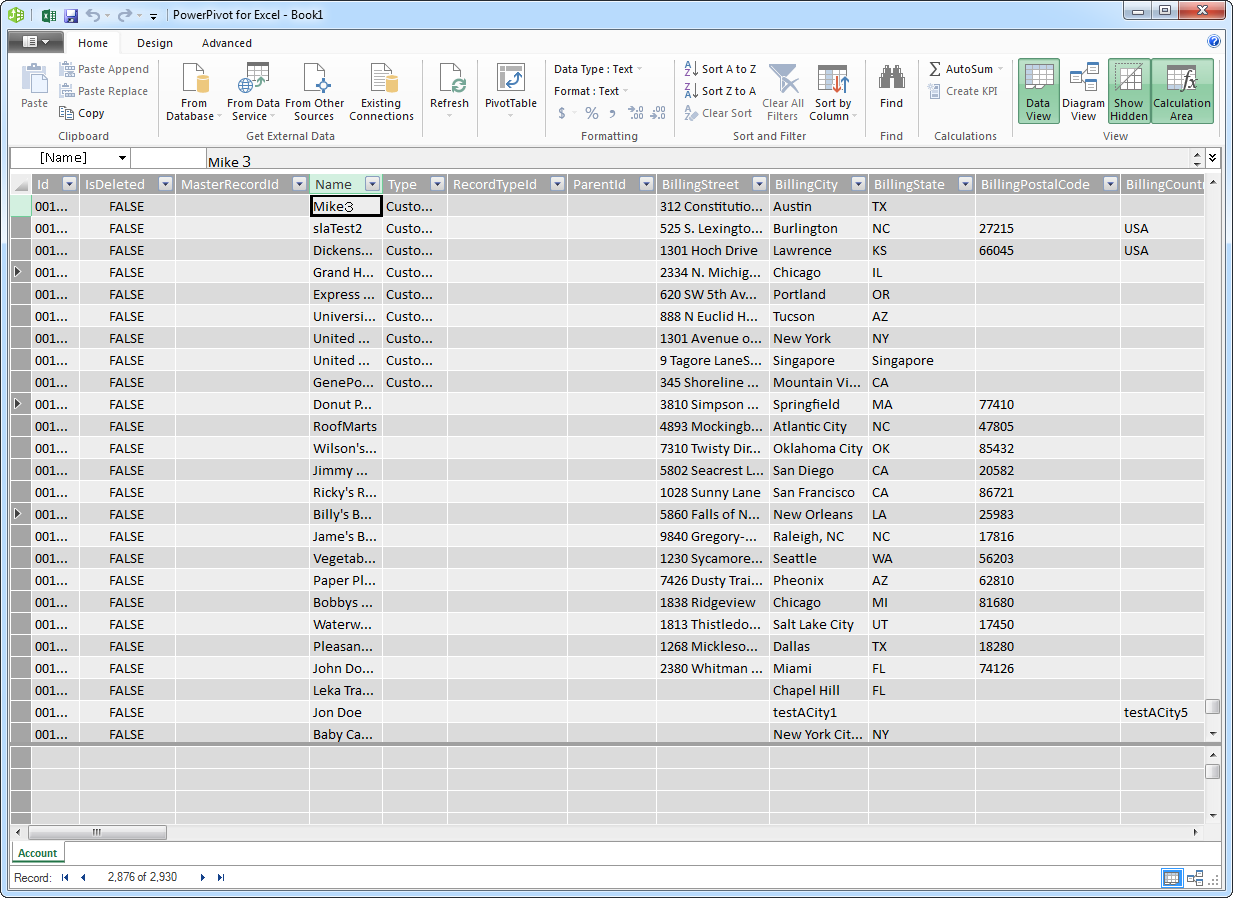Model Context Protocol (MCP) finally gives AI models a way to access the business data needed to make them really useful at work. CData MCP Servers have the depth and performance to make sure AI has access to all of the answers.
Try them now for free →Use the API Server and MongoDB ADO.NET Provider to Access MongoDB Data in Microsoft PowerPivot
Use the API Server to connect to live MongoDB data in the PowerPivot business intelligence tool.
This article will explain how to use the API Server and the ADO.NET Provider for MongoDB (or any of 200+ other ADO.NET Providers) to provide MongoDB data as OData services and then consume the data in Microsoft Excel's PowerPivot business intelligence tool. Follow the steps below to retrieve and edit MongoDB data in Power Pivot.
About MongoDB Data Integration
Accessing and integrating live data from MongoDB has never been easier with CData. Customers rely on CData connectivity to:
- Access data from MongoDB 2.6 and above, ensuring broad usability across various MongoDB versions.
- Easily manage unstructured data thanks to flexible NoSQL (learn more here: Leading-Edge Drivers for NoSQL Integration).
- Leverage feature advantages over other NoSQL drivers and realize functional benefits when working with MongoDB data (learn more here: A Feature Comparison of Drivers for NoSQL).
MongoDB's flexibility means that it can be used as a transactional, operational, or analytical database. That means CData customers use our solutions to integrate their business data with MongoDB or integrate their MongoDB data with their data warehouse (or both). Customers also leverage our live connectivity options to analyze and report on MongoDB directly from their preferred tools, like Power BI and Tableau.
For more details on MongoDB use case and how CData enhances your MongoDB experience, check out our blog post: The Top 10 Real-World MongoDB Use Cases You Should Know in 2024.
Getting Started
Set Up the API Server
Follow the steps below to begin producing secure MongoDB OData services:
Deploy
The API Server runs on your own server. On Windows, you can deploy using the stand-alone server or IIS. On a Java servlet container, drop in the API Server WAR file. See the help documentation for more information and how-tos.
The API Server is also easy to deploy on Microsoft Azure, Amazon EC2, and Heroku.
Connect to MongoDB
After you deploy the API Server and the ADO.NET Provider for MongoDB, provide authentication values and other connection properties needed to connect to MongoDB by clicking Settings -> Connections and adding a new connection in the API Server administration console.
Set the Server, Database, User, and Password connection properties to connect to MongoDB. To access MongoDB collections as tables you can use automatic schema discovery or write your own schema definitions. Schemas are defined in .rsd files, which have a simple format. You can also execute free-form queries that are not tied to the schema.
You can then choose the MongoDB entities you want to allow the API Server access to by clicking Settings -> Resources.
Additionally, click Settings -> Server and set the Default Format to XML (Atom) for compatibility with Excel.
Authorize API Server Users
After determining the OData services you want to produce, authorize users by clicking Settings -> Users. The API Server uses authtoken-based authentication and supports the major authentication schemes. Access can also be restricted based on IP address; by default, only connections to the local machine are allowed. You can authenticate as well as encrypt connections with SSL.
Import MongoDB Tables in Power Pivot
Follow the steps below to import tables that can be refreshed on demand:
- In Excel, click the PowerPivot Window icon in the PowerPivot tab to open PowerPivot.
- Click Home -> Get External Data -> From Data Service -> From OData Data Feed.
-
Add authentication parameters. Click Advanced and set the Integrated Security option to Basic. You will need to enter the User Id and Password of a user who has access to the CData API Server. Set the password to the user's authtoken.
-
In the Base URL box, enter the OData URL of the CData API Server. For example, http://localhost:8032/api.rsc.

-
Select which tables you want to import and click Finish.

You can now work with MongoDB data in Power Pivot.

